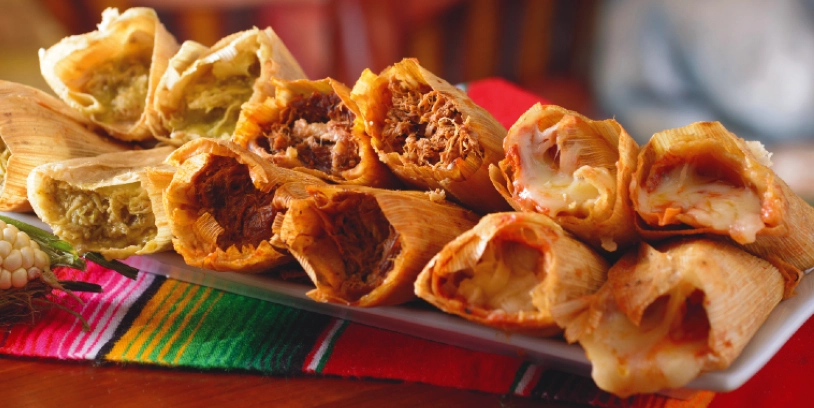With their rich flavors, shapes, and colors, Tamales are part of Latin Americans’ daily diet. Over the years, tamales have become healthier, more exotic, and even gourmet.
In my country, Colombia, there is always a reason to eat tamales. In some regions, this delicious dish is so traditional that it is usually eaten at breakfast as a main dish, as it is considered a perfect caloric food to start the day.
It is served at lunchtime in other Colombian territories and Latin American countries. Its delicious flavor and unmistakable smell call for family reunions, celebrations, Christmas, and end-of-year parties.
In Latin America, tamales can be sweet or salty and come in many versions. Before we learn about preparation, let’s know a little about its history.
History
According to the Larousse dictionary (2021), the word tamal comes from the Nahuatl word tamalli, which means wrapped. The tamale is a food of pre-Columbian origin from the Mesoamerican cultures that comprise the southern half of Mexico, Guatemala, El Salvador, Belize, Honduras, western Nicaragua, and Costa Rica. These territories migrated this dish to the regions of South America.
Some archaeological evidence, such as sculptures and paintings, shows the tamale as part of the daily life of some Mexican cultures, such as the Mexica and the Maya.
These communities also ate tamales in rituals or ceremonies. At that time, different protein sources were part of the recipe, such as iguana, turkey, rabbit, deer meat, and fish; the only difference with modern tamales is that they did not contain added fat.
Related Article: Top 10 Hispanic Grocery Items Americans Buy
Preparation
There are endless variations on the modern tamale. The ingredients depend on the country or area of origin of the recipe.
However, its main base is corn dough or ground rice seasoned with salt, pepper, and cumin, with added pork fat. It is filled with meats (beef, chicken, pork), vegetables, olives, beans, cheese, capers, and eggs, among other things.
This appetizing dough mixture is wrapped in banana, bijao, corn, maguey, or avocado vegetable leaves. It is then cooked in boiling water or steamed.
Mexican tamale
In Mexico, for example, tamales are the typical dish served on February 2 – Candelaria’s Day – or as an offering on the Day of the Dead. They are accompanied by atole, a very hot sweet corn drink.
There are more than 300 varieties of tamales in Mexico, even though the country has only 32 states. The Mexican tamale and its filling usually have a sauce (green, red, or mole).
Sweet tamales are filled with fruit such as pineapple, strawberries, and raisins.
Colombian tamales
In Colombia, for example, there are varieties of tamales that come from regions of the country: Tolima, Antioquia, Santa Fe, Santander, Valluno, pipian tamal, and tamal from Nariño, all with marked differences in ingredients and flavor.
As a tradition, they go together with delicious hot chocolate, well-seasoned bread, sponge cakes, or white corn arepa.
Let’s eat tamales!
Traditionally, people can buy tamales at marketplaces or street stalls. Often, homemade tamales are sold at home, where ladies who keep the family recipe have recurring customers and sell the product by word of mouth.
Industrial factories also manufacture this product for mass sale in freezer coolers, and, of course, typical restaurants offer it on the menu.
And keep the party going! Because tamales cannot be missing this Christmas in the family menu to highlight our gastronomic customs. More than an obligatory dish to be savored, to travel through our traditions and remember our origins, it is an iconic preparation underscoring the culture of each place of our land that, fortunately, we have inherited to stay on our tables.


